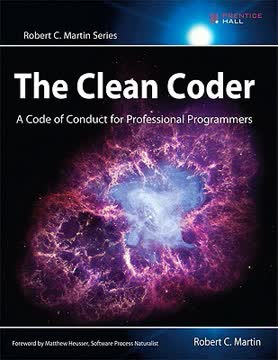Key Takeaways
1. Write clean code that is readable and maintainable
The only valid measurement of code quality: WTFs/minute
Readability is paramount. Clean code should be easily understood by other developers. It should be simple, elegant, and free of clutter. Strive to write code that clearly expresses its intent without the need for extensive comments. Use meaningful variable and function names, keep functions small and focused, and organize code logically.
Maintainability enables evolution. Code that is difficult to change becomes a liability. Design your code to be flexible and modular so it can adapt to changing requirements. Follow principles like DRY (Don't Repeat Yourself) and SOLID to create loosely coupled, highly cohesive systems. Refactor mercilessly to improve code structure without changing behavior.
Clean code pays off. While writing clean code takes more upfront effort, it saves significant time and headaches in the long run. Clean code is easier to debug, extend, and maintain. It enables developers to work more efficiently and reduces the risk of introducing bugs during changes. Make clean code a core part of your development practice.
2. Follow meaningful naming conventions
The name of a variable, function, or class, should answer all the big questions. It should tell you why it exists, what it does, and how it is used.
Use intention-revealing names. Choose names that clearly convey the purpose and behavior of variables, functions, and classes. Avoid single-letter names or cryptic abbreviations. Use pronounceable names that can be searched easily. For example:
- Bad: d (elapsed time in days)
- Good: elapsedTimeInDays
Be consistent and precise. Use consistent naming conventions throughout your codebase. Be precise to avoid ambiguity - for instance, use meaningful distinctions like getActiveAccounts() and getActiveAccountInfo(). Avoid encodings or prefixes that add noise without value. Class names should be nouns, method names should be verbs.
Name length should match scope. Use longer, more descriptive names for variables and functions with larger scopes. Short names are acceptable for small, local scopes. The length of a name should be proportional to its scope of use. Optimize for readability and understanding within the context where the name is used.
3. Keep functions small and focused
Functions should do one thing. They should do it well. They should do it only.
Small is beautiful. Functions should be small - typically 5-10 lines long. They should fit on one screen and be instantly graspable. Extract code into well-named helper functions rather than writing long, complex functions. Small functions are easier to understand, test, and maintain.
Do one thing well. Each function should have a single, clear purpose. If a function is doing multiple things, extract those into separate functions. Signs that a function is doing too much include:
- Multiple levels of abstraction
- Multiple sections or code blocks
- Numerous parameters
Maintain one level of abstraction. The statements within a function should all be at the same level of abstraction. Don't mix high-level logic with low-level details. Extract lower-level operations into separate functions. This improves readability by keeping functions focused and conceptually simple.
4. Practice proper formatting and organization
Code formatting is about communication, and communication is the professional developer's first order of business.
Consistent formatting matters. Use consistent indentation, line breaks, and spacing throughout your code. This improves readability and reduces cognitive load. Agree on formatting standards with your team and use automated tools to enforce them. Key formatting guidelines include:
- Proper indentation
- Consistent brace placement
- Logical line breaks
- Appropriate whitespace
Organize code logically. Group related code together and separate unrelated code. Use blank lines to create "paragraph" breaks between logical sections. Place related functions near each other. Keep files focused on a single concept or component. Break large files into smaller, more focused ones when appropriate.
Follow standard conventions. Adhere to standard conventions for your language and community. This makes your code more familiar and accessible to other developers. For example, in Java:
- Class names use PascalCase
- Method names use camelCase
- Constants use ALL_CAPS
5. Manage dependencies and avoid duplication
Duplication may be the root of all evil in software.
Eliminate duplication. Duplicated code is a missed opportunity for abstraction. When you see duplication, extract the common code into a reusable function or class. This improves maintainability by centralizing logic and reducing the risk of inconsistent changes. Types of duplication to watch for:
- Identical code blocks
- Similar algorithms with slight variations
- Repeated switch/case or if/else chains
Manage dependencies carefully. Minimize dependencies between modules to reduce coupling. Use dependency injection and inversion of control to make code more modular and testable. Follow the Dependency Inversion Principle - depend on abstractions, not concretions. This makes your code more flexible and easier to change.
Use the principle of least knowledge. A module should not know about the innards of the objects it manipulates. This reduces coupling between modules. For example, use Law of Demeter - a method should only call methods on:
- Its own object
- Objects passed as parameters
- Objects it creates
- Its direct component objects
6. Handle errors gracefully
Error handling is important, but if it obscures logic, it's wrong.
Use exceptions rather than error codes. Exceptions are cleaner and don't clutter the main logic of your code. They allow error handling to be separated from the happy path. When using exceptions:
- Create informative error messages
- Provide context with exceptions
- Define exception classes based on caller's needs
Don't return null. Returning null leads to null pointer exceptions and clutters code with null checks. Instead:
- Return empty collections instead of null for lists
- Use the Null Object pattern
- Use Optional in Java or Maybe in functional languages
Write try-catch-finally statements first. Start with the try-catch-finally when writing code that could throw exceptions. This helps define the scope and expectations for the calling code. It ensures that resources are properly managed and released, even in error scenarios.
7. Write thorough unit tests
Test code is just as important as production code.
Follow the three laws of TDD. Test-Driven Development (TDD) improves code quality and design:
- Write a failing test before writing any production code
- Write only enough of a test to demonstrate a failure
- Write only enough production code to pass the test
Keep tests clean and maintainable. Apply the same standards of code quality to your tests as to your production code. Refactor and improve test code regularly. Well-structured tests serve as documentation and enable fearless refactoring of production code.
Aim for comprehensive test coverage. Write tests that cover edge cases, boundary conditions, and error scenarios - not just the happy path. Use code coverage tools to identify gaps in test coverage. Remember that 100% coverage doesn't guarantee bug-free code, but it provides confidence in refactoring and changes.
8. Refactor code continuously
Leave the campground cleaner than you found it.
Refactor opportunistically. Improve code structure whenever you work on a piece of code. Follow the Boy Scout Rule: leave the code better than you found it. Small, incremental improvements add up over time and prevent code rot. Common refactoring techniques include:
- Extracting methods or classes
- Renaming for clarity
- Simplifying complex conditionals
- Removing duplication
Refactor safely with tests. Always have a solid suite of tests before refactoring. Make small, incremental changes and run tests frequently. This gives you confidence that your changes aren't breaking existing functionality. Use automated refactoring tools when available to reduce the risk of introducing errors.
Balance refactoring with delivering value. While continuous refactoring is important, don't let it paralyze progress. Aim for "good enough" rather than perfection. Focus refactoring efforts on the most problematic or frequently changed areas of code. Communicate the value of refactoring to stakeholders to ensure support for ongoing code improvement.
9. Apply object-oriented and functional programming principles
Objects hide their data behind abstractions and expose functions that operate on that data. Data structures expose their data and have no meaningful functions.
Use object-oriented principles wisely. Apply principles like encapsulation, inheritance, and polymorphism to create flexible, modular designs. Follow the SOLID principles:
- Single Responsibility Principle
- Open-Closed Principle
- Liskov Substitution Principle
- Interface Segregation Principle
- Dependency Inversion Principle
Leverage functional programming concepts. Even in object-oriented languages, functional programming techniques can lead to cleaner code:
- Pure functions without side effects
- Immutable data
- Higher-order functions
- Function composition
Choose the right approach for the problem. Object-oriented and functional paradigms each have strengths and weaknesses. Use object-oriented design when you need to model complex domains with behavior. Use functional approaches for data transformation and processing pipelines. Many modern languages support a hybrid approach, allowing you to use the best tool for each part of your system.
10. Consider concurrency carefully
Concurrency is a decoupling strategy. It helps us decouple what gets done from when it gets done.
Understand concurrency challenges. Concurrent programming introduces complexity and potential for subtle bugs. Common issues include:
- Race conditions
- Deadlocks
- Missed signals
- Memory visibility problems
Separate concurrency concerns. Keep your concurrency-related code separate from other code. This makes it easier to reason about and test. Use abstractions like Executors, Futures, and Actors to manage concurrency rather than working with raw threads.
Prefer immutability and pure functions. Immutable objects and pure functions are inherently thread-safe. They eliminate many concurrency issues by avoiding shared mutable state. When mutable state is necessary, use proper synchronization techniques and consider using atomic variables or concurrent collections.
Last updated:
FAQ
What's "Clean Code: A Handbook of Agile Software Craftsmanship" about?
- Focus on Clean Code: "Clean Code" by Robert C. Martin emphasizes writing code that is easy to read, understand, and maintain.
- Professionalism in Coding: It argues that clean code is a hallmark of professionalism in software development.
- Practical Advice: The book provides guidelines, examples, and case studies to help developers write clean and efficient code.
Why should I read "Clean Code: A Handbook of Agile Software Craftsmanship"?
- Improve Coding Skills: It teaches how to write code that is clean, efficient, and maintainable.
- Learn from Experts: Part of the Robert C. Martin series, known for its technical and pragmatic approach.
- Long-term Benefits: Writing clean code reduces maintenance costs and makes you a more valuable developer.
What are the key takeaways of "Clean Code: A Handbook of Agile Software Craftsmanship"?
- Code Readability: Emphasizes that code should be easy to read and understand.
- Single Responsibility Principle: Advocates for each class or function to have one reason to change.
- Continuous Improvement: Encourages developers to continuously improve their code, following the Boy Scout Rule.
How does "Clean Code: A Handbook of Agile Software Craftsmanship" define clean code?
- Elegance and Efficiency: Clean code is described as elegant and efficient, with minimal dependencies.
- Readable and Maintainable: It should read like well-written prose, making the designer's intent clear.
- Focused and Single-minded: Each function, class, and module should have a single, clear purpose.
What is the Single Responsibility Principle in "Clean Code: A Handbook of Agile Software Craftsmanship"?
- One Reason to Change: A class or module should have one, and only one, reason to change.
- Improves Cohesion: Ensures that classes are cohesive, with closely related methods and variables.
- Facilitates Maintenance: Makes the code easier to maintain and extend, reducing the impact of changes.
What is the "Boy Scout Rule" mentioned in "Clean Code: A Handbook of Agile Software Craftsmanship"?
- Continuous Improvement: Suggests leaving the codebase cleaner than you found it.
- Small, Incremental Changes: Encourages making small improvements, like renaming variables or breaking up functions.
- Professional Responsibility: Presented as a professional responsibility to ensure maintainability.
How does "Clean Code: A Handbook of Agile Software Craftsmanship" approach Test-Driven Development (TDD)?
- Fundamental Discipline: TDD is crucial for writing clean, reliable code.
- Three Laws of TDD: Write a failing test first, write code to pass the test, then refactor.
- Benefits: Helps catch bugs early and improves code design.
What are "code smells" according to "Clean Code: A Handbook of Agile Software Craftsmanship"?
- Definition: Indicators of potential problems that hinder readability or maintainability.
- Examples: Long methods, large classes, and duplicated code.
- Addressing Smells: Provides heuristics and refactoring techniques to improve code quality.
How does "Clean Code: A Handbook of Agile Software Craftsmanship" suggest handling exceptions?
- Prefer Exceptions: Use exceptions instead of error codes for better context and management.
- Provide Context: Include meaningful messages and context when throwing exceptions.
- Avoid Checked Exceptions: Suggests using unchecked exceptions for cleaner code.
What role do unit tests play in "Clean Code: A Handbook of Agile Software Craftsmanship"?
- Ensure Code Quality: Unit tests ensure code works as intended and remains maintainable.
- Test-Driven Development: Advocates writing tests before production code.
- Clean and Readable Tests: Tests should be as clean and readable as production code.
What is the role of refactoring in "Clean Code: A Handbook of Agile Software Craftsmanship"?
- Continuous Improvement: Refactoring improves code structure and readability without changing functionality.
- Techniques: Provides techniques like Extract Method and Rename Variable to enhance code quality.
- Fearless Refactoring: With comprehensive tests, developers can refactor confidently.
What are the best quotes from "Clean Code: A Handbook of Agile Software Craftsmanship" and what do they mean?
- "Clean code does one thing well." Emphasizes focus and clarity in code.
- "Leave the campground cleaner than you found it." Encourages continuous improvement of the codebase.
- "You know you are working on clean code when each routine you read turns out to be pretty much what you expected." Highlights the importance of readability and predictability.
Review Summary
Clean Code receives mostly positive reviews for its principles on writing readable, maintainable code. Readers appreciate the practical advice on naming, functions, and testing. The book's Java focus and some overly strict guidelines are common criticisms. Many consider it essential reading for developers, though some find it less useful for experienced programmers. The case studies and refactoring examples are praised by some but criticized by others as overdone. Overall, reviewers agree the book offers valuable insights on code quality, even if not all suggestions are universally applicable.
Similar Books
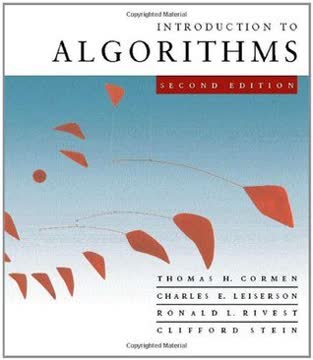

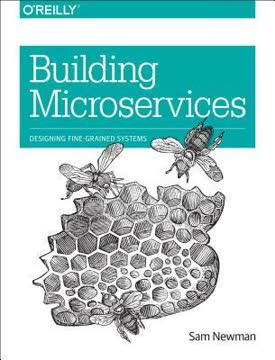
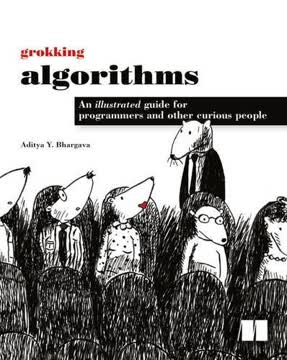
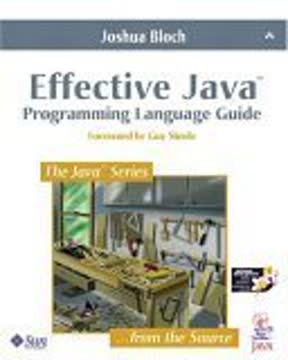
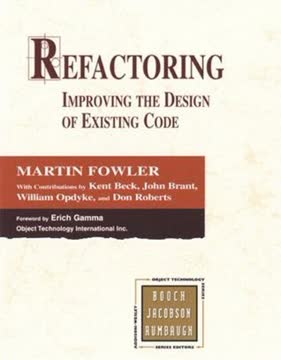
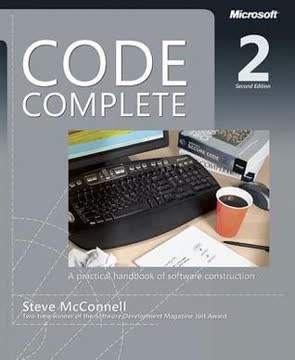

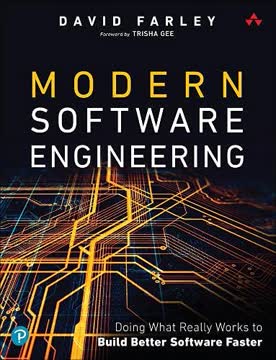
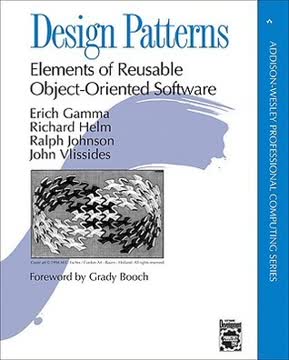
Download PDF
Download EPUB
.epub digital book format is ideal for reading ebooks on phones, tablets, and e-readers.

